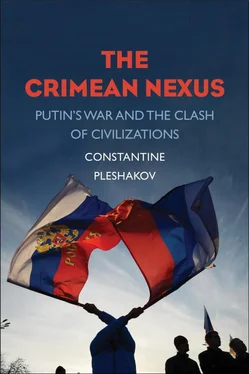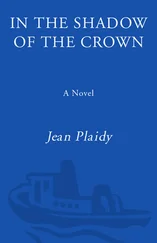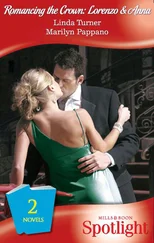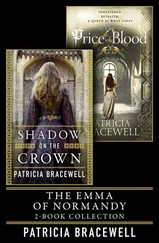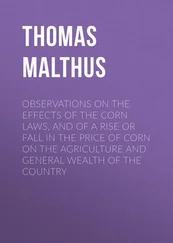Koktebel is a seaside location in eastern Crimea. At the end of the nineteenth century, before the Russian literati colonized it, it was a simple Bulgarian village on a picturesque but not exactly breathtaking bay. Many are deceived by its French-sounding name ( côte de bel? coq de belle? ), but only because they want to be. “Koktebel” comes from Tatar and means Gray Hills. The exact path of the transformation that made Koktebel a cult destination is a separate subject; here, let’s look at the end product. [7] Kupchenko, Trudy i dni Maksimiliana Voloshina , 26.
In Chekhov’s time, Russians compared Koktebel favorably with Greece, Alicante in Spain, and Italy’s Amalfi Coast. This was not totally wrong, as arid Mediterranean coasts have bays much like Koktebel, but still an exaggeration. Koktebel would have been at best mediocre in, say, Peloponnesus. In the Russian empire, it stood out because it was one of the few corners in that uncomfortably northern country that even resembled Greece. By the 1960s, Koktebel had become the place to visit in summer, a combination of artists’ colony, playground of the rich, and backpackers’ camp—Provincetown, St. Bart’s, and South Beach all in one, celebrated in dozens of poems from Marina Tsvetaeva to Brodsky. [8] Voloshin, Istoriya moei dushi , 272–273; Brodsky, “S vidom na more” (“A Place with a Sea View”), in Brodsky, Sochineniya , vol. 2, 158–160.
Koktebel stands at the foothills of a dead volcano, and the peculiarities of the local currents and seabed put its bay on the receiving end of an underwater bounty, as each storm delivers tens of thousands of semiprecious pebbles of volcanic origin—green, pink, red, yellow, sometimes blue, and called by different names—jasper, agate, chalcedony, carnelian, sardonyx. Usually a beautiful stone collected from the beach loses most of its attractiveness when it dries, its brilliant colors when wet fading like a dead fish. Not so with Koktebel rocks.
On some level, Koktebel rock hunting is similar to collecting shells on Sanibel Island in Florida—but not really. Normally, gathering shells (or rocks) is largely a matter of taxonomy, and for a collector, Sanibel Island is simply the best hunting ground for a wide variety of interesting specimens, a matter of practicality and convenience. With Koktebel rocks, the thing that matters is the origin, not the quality of the specimen. You could have found a brighter jasper elsewhere, but it would be just a rock.
Harvested, transported, kept as family heirlooms, cherished in almost a religious way, Koktebel rocks become talismans of a better, higher world. The cult of collecting was reported as early as the 1890s; by the 1950s, the “colored beaches” of Koktebel had become famous (of course, by now decades of overharvesting have bleached a lot of the color from the Koktebel beach). [9] Kupchenko, Trudy i dni Maksimiliana Voloshina , 26; D. I. Shcherbakov, Po goram Kryma, Kavkaza i Srednei Azii (Moscow: Gosudarstvennoe izdatelstvo geograficheskoi literatury, 1954), 60.
Koktebel got a mythologized patron, the poet and artist Maksimillian Voloshin (1877–1932), whose diary entry (“To South! To South!”) I quoted a few pages ago. Definitely not a first-tier or second-tier poet, and perhaps worse as an artist, fondly remembered by fans for hundreds of watercolor views of the bay from every possible angle, Voloshin was Koktebel’s genius loci. Referred to as Max (the nickname intentionally “Western”), he maintained a salon that later, when times turned hard with the civil war, became a hostel for Russian literati. Inexplicably, he lived through revolution, civil war, and terror unscathed.
Over the years, Voloshin gave shelter and food to hundreds of people. Eventually, an invitation to spend a month at Voloshin’s became a definitive sign that one had made it in Moscow’s literary and artistic world. Yet his transformation from mere host into Koktebel’s patron saint is telling. The whole area became perceived as a territory of singular qualities, largely immune to state meddling, something resembling a safe magical forest in a tale by J. R. R. Tolkien. Max was eccentric, loud, larger than life, and he regarded his village as a sovereign realm. He walked around Koktebel barefoot, in a nightgown, holding an oversized staff—an earthy figure of magical powers. [10] Curtis, Manuscripts Don’t Burn , 199.
In the past fifty years, Russian academic hagiography of Voloshin and other literary and artistic figures of the Russian “Silver Age” who happened to reside or visit in the Koktebel area has become amazingly rich. V. P. Kupchenko, for example, a philologist, had spent thirty-four years constructing a day-to-day chronicle of Voloshin’s life, a rare level of attention for any cultural icon. All of the scholarly volumes, conferences, shows, and readings are more a monument to their authors than to their subjects. They also celebrate a fetish—the Crimean peninsula’s Mediterranean corner. [11] Kupchenko, Trudy i dni Maksimiliana Voloshina , 5; T. Zhukovskaya and E. Kallo, eds., “Serebryanyi vek” v Krymu: vzgliad iz XXI stoletiya. Materialy Shestykh Gertsykovskikh chtenii v g. Sudake, 8–12 iunya 2009 goda (Moscow: Dom-musei Tsvetaevoi, 2011).
Romanticism and Orientalism
In Crimea, the Russian encountered an element he had not likely seen before: the sea. Similarly, living in country that was flat or (barely) rolling, in Crimea he met earth in an intriguing incarnation: mountains.
The empire conquered the mountains and the seacoasts at the time when European Romantics were busy reinventing both. Before that, a cliff had been either an annoying hindrance or a natural foundation for a castle, not something “beautiful.” The beach was where fishing boats moored, gulls littered, and winds howled. It was the Romantics who discovered these places as aesthetic experiences. When the Polish national poet Adam Mickiewicz, who visited the peninsula in 1825, published his Crimean Sonnets, out of eighteen poems, six were about bays and beaches, six glorified mountaintops and cliffs, and five sang of ruins. [12] Adam Mickiewicz, Sonnets from the Crimea (San Francisco: Paul Elder, 1917).
For educated Russians arriving in Crimea, the new domain came with a prefabricated mood.
To Russian visitors from the north, the Black Sea seemed like an outlet to a freer world. Their national poet, Alexander Pushkin, dubbed it the “free element” in a canonic poem. The poem’s story is, in fact, deeply unpatriotic: the narrator, like Pushkin in real life, plans to escape Russia by crossing the sea, and fails. [13] “K moriu” (“Homage to the Sea”): A. S. Pushkin, Polnoye sobraniye sochinenii v shestnadtsati tomakh (Moscow: AN SSSR, 1937–1959), vol. 2, 331–333.
The Black Sea fixation looks strange, as the imperial capital, St. Petersburg, sits on a seacoast too. But by the early nineteenth century (Pushkin wrote his poem in 1824), the shores of the Baltic Sea had been secured by the Russian state, and its traffic was diligently monitored by the police, the customs service, and the navy. Across the sea from St. Petersburg was a Russian protectorate, Finland. A rebel hoping for escape might have said, “Thanks for nothing, Baltic, you are about as free as I am.”
But in the south, the state had not had time to build up its controls. Mikhail Lermontov’s “Taman,” set on the desolate shores of the Sea of Azov, romanticizes a couple of young and attractive partners in crime, “honest smugglers,” as Lermontov calls them (the woman tries drowning the narrator after he discovers what their family business is). The same story mentions a local beauty who had eloped to Turkey across the sea with a Crimean boatman. [14] “Taman’”: M. Yu. Lermontov, Geroi nashego vremeni (Moscow: Shkola-Press, 1999), 55, 63; Mikhail Lermontov, A Hero of Our Time (New York: Everyman’s Library, 1992), 70, 81.
(Lermontov visited Taman in 1837, at the time of the first Tatar exodus.)
Читать дальше
